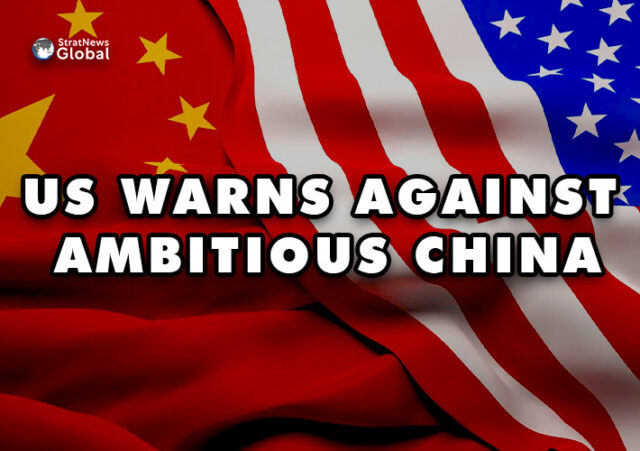The 2024 US Threat Assessment Report brought out by the US intelligence community, is in the context of what is described as “accelerating strategic competition among major powers, more intense and unpredictable transnational challenges and multiple regional conflicts with far reaching implications.”
Key adversaries the report identifies range from “an ambitious but anxious China”, to “a confrontational Russia, some regional powers such as Iran and more capable non-state actors”.
China figures first on the list of challenges with the report acknowledging that country as “the pre-eminent power in East Asia and as a leading power on the world stage. The Chinese Communist Party will attempt to preempt challenges to its reputation and legitimacy, undercutting US influence, driving wedges between the US and its partners and fostering global norms that favour its authoritarian system.”
The report warns that China sees the US in terms of a broad campaign to undermine its rise in political, economic, military and technological areas. China faces many domestic challenges including demographic slowing and a collapse in consumer and investor sentiment due in large part to Beijing’s heavy-handed policies. These policies have forced many countries and businesses to restrict and limit the export of sensitive technologies to China.
Beijing’s national security focus has led it for make new laws on data security and anti-espionage targeting foreign firms. It has led it to crackdown on tech firms and seek society’s cooperation in counterintelligence activities.
Corruption is a major focus of President Xi Jinping but this is undermined by the Communist Party alone retaining the right to fight corruption while the unrivalled power of party officials only encourages graft and abuse.
Xi’s hardline approach to security has seen him come down hard on separatism in Xinjiang, Tibet and Hong Kong as well as a broader targeting of dissent and religion. This in turn has triggered widespread and worldwide criticism of China’s human rights record.
The report warns that “Beijing is balancing the level of its support to Moscow to maintain the relationship without incurring risk to its economic and diplomatic interests.” It notes that trade between the two countries has been rising since the war in Ukraine, the “export of goods with potential military use rose more than threefold since 2022.”
It says China’s economy will slow because of structural barriers and Beijing’s unwillingness to take aggressive stimulus measures to boost economic growth. This could create resource constraints in the long run and force it to prioritize spending between social issues, industrial policy, military and overseas lending.
In technology, China’s ‘whole of government approach’, will see over $13 billion invested in AI, advanced semiconductors, biotechnology and new materials. China now rivals the US in DNA-sequencing equipment. It is making progress in chips for cryptocurrency mining and cellular devices at the sub-7nanometre level. By next year, 40% of all 28-nanometre chips will be produced in China.
In the military domain, China will boost its strategic forces since it sees its current capabilities vis a vis the US as insufficient. It has already built some 300 ICBM silos some of which house missiles. The PLA will continue to modernize fielding modern systems for joint operations. AI is being explored for missile guidance, target identification and detection. The navy is looking to expand military bases from the current one in Djibouti. China has counterspace weapon capabilities to target US and allied satellites. It has already fielded antisatellite weapons and directed energy weapons.
China is working on its cyber capabilities and there is evidence it intended to disrupt US cyber infra on Guam and also between the US and Asia. In the event of a major conflict with the US, China would consider aggressive cyber operations targeting US infrastructure, induce societal panic and interfere with the deployment of US forces.
Thirty eight years in journalism, widely travelled, history buff with a preference for Old Monk Rum. Current interest/focus spans China, Technology and Trade. Recent reads: Steven Colls Directorate S and Alexander Frater's Chasing the Monsoon. Netflix/Prime video junkie. Loves animal videos on Facebook. Reluctant tweeter.





